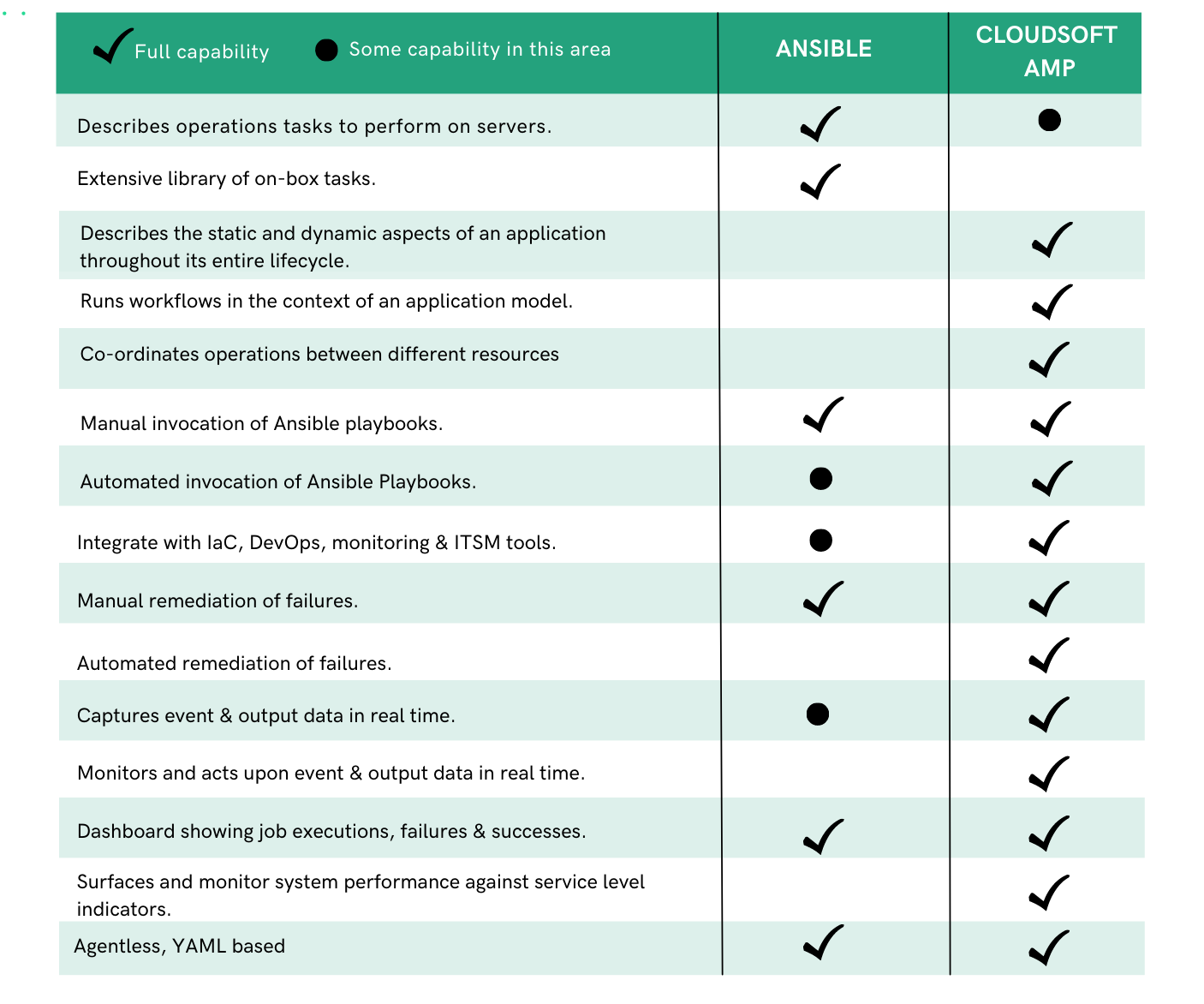Ansible vs Cloudsoft AMP; how do they compare?
/4.png?width=200&name=4.png)
Both Cloudsoft AMP and Ansible provide ways of describing automation and of providing visibility of that automation. However, AMP focuses higher up the stack, coordinating automation in the context of an application. While AMP can replace Ansible for some of the capabilities, more commonly it leverages Ansible so that the best tools are used for the right jobs at the right times.
Ansible at-a-glance
Ansible is focused on:
- a declarative Infrastructure-as-Code (IaC) model of tasks;
- ensuring reliable, repeatable execution within a known context;
- using statements of which tasks should be run on a given target system instance to converge it to the desired state.
- real time visibility of servers and automation tasks (via Tower/AWX).
Cloudsoft AMP at-a-glance
Cloudsoft AMP is focused on:
- a declarative Infrastructure-as-Code (IaC) model of systems;
- co-ordinating and automating the reliable, repeatable deployment, discovery, and operations of complex applications;
- providing real-time view and control of topology, events, triggers, and tasks, to converge a multi-component (even multi-platform, multi-environment) system to the desired state.
How Ansible and Cloudsoft AMP work together
AMP complements your existing tech toolbox; eg containers, CI/CD, Server Config Management (SCM), IaC, and ITSM tools, as all of these play vital roles in application management.
If Ansible is in your toolbox, AMP will ensure your Ansible playbooks are run. AMP might be triggered by CI/CD or self-service ITSM, and then automatically coordinate the deployment or update to the other systems.
Ansible playbooks describe explicit automation steps (the “what”). Whilst AMP also describes the "what", AMP can extend it to describe how and when playbooks should be triggered throughout the entire lifecycle of an application.
With Ansible, the user needs to keep on top of when playbooks should be run. AMP can automate this, by leveraging Ansible artifacts in key parts of the application model (effectors, policies, workflows). AMP's models are also cognisant of the evolving infrastructure footprint of an application over time. In this regard, Ansible is no different to the many other mechanisms that AMP can include within its models.
AMP vs Ansible: feature comparison

